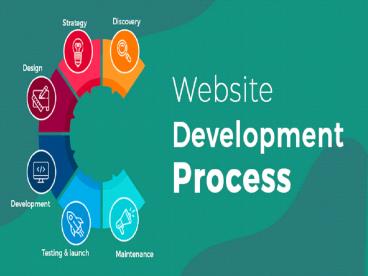Website Development Process - PowerPoint PPT Presentation
Title:
Website Development Process
Description:
A robust and highly-responsive website is a result of a meticulous website development process that covers discovery, strategy, designing, development, testing, and maintenance. – PowerPoint PPT presentation
Number of Views:1710
Title: Website Development Process
1
(No Transcript)
2
Hestabit Technologies is the top-ranking website
development company. Every business needs a
website that is user-friendly and aligns with its
business goals. But for things to go smoothly,
every business or start-up needs a partner that
has enough technical pedigree. So if you are
looking for an efficient partner, then get in
touch with Hestabit technologies. They have
helped many start-ups in developing custom-made
websites. Their agile approach is what makes
them a successful website development company.
Their USP is the thorough consultation which
they offer to their clients. They work under
reasonable budgets and yet develop websites that
give satisfying user experience. They have
shown their technological prowess over and over
again by building exciting web applications, and
websites pertaining to travel, e-commerce, price
comparison etc. The quality of their work has
helped them muster many awards (Cannes Lions,
Favorite Website Award)
3
Whats The Process Behind Website Development?
4
Role of Planning In Website Development Process?
- Defining business goals, estimating the budget,
strategizing the website structure and
post-development work, all come under planning. - Planning is the groundwork without which Website
development may fail. Deadlines may get missed,
or important features might go missing from the
website. - Lets discuss the different phases involved in
Website Development.
5
Goal Setting And SRS Documentation
- The Scope of the Website is defined.
- The following questions are taken into
consideration - What does your brand represent?
- What are your business goals?
- What is your target audience?
- What kind of content will create interest in the
target audience? - SRS documentation is done in the planning phase.
The document contains information on the goals,
parameters, target audience, user interface,
hardware and software requirements. - CMS (Content Management System) is chosen.
6
Sitemapping Wireframing
- The websites architecture is strategized.
- Sitemap of the website is created. It establishes
the navigational flow of a website. It shows the
relationship between a websites pages and its
content elements. - After Sitemapping, Wireframe is created. It
represents website in the form of blocks. - In a wireframe, lines indicate texts, and squares
having X inscribed in them indicate image-spaces. - Wireframe can be created using tools like
Balsamiq, Axure, or Pencil Evolus can be used in
this regard.
7
Designing The Prototype
- After Wire framing is done, websites prototype
is created. - Prototype is the mock-up of the websites live
version, which gives a feel to the website. - It incorporates the colour combinations, logos,
and typography into the website. - The aim is to create a web design in which the
functionalities remain consistent. - Prototypes can be created using Invision App or
Flinto. - They are usually created in JPEG format.
8
Making The Website Functional
- In this phase, the prototype is made fully
functional by Developers. - The CMS is also implemented during this phase.
- The features of the website are mapped into the
HTML elements, to write the basic HTML code. - The overall styling of the website is defined and
stored as stylesheets (CSS files). - The dynamic features of the website such as
contact forms, carousels, auto-fill fields etc.
are added using JavaScript.
9
- In this phase, the prototype is made fully
functional by Developers. - The CMS is also implemented during this phase.
- The features of the website are mapped into the
HTML elements, to write the basic HTML code. - The overall styling of the website is defined and
stored as stylesheets (CSS files). - The dynamic features of the website such as
contact forms, carousels, auto-fill fields etc.
are added using JavaScript.
10
Testing
- The written code is tested to check websites
cross-browser compatibility, input fields, login
and sign up areas. - Testing is done in five phases
- I. Smoke testing In this phases, the stability
of the website is tested to ensure it can be
tested further for other criticalities. - II. Unit testing In this phase, a programs
individual units are tested. Individual units may
include few inputs and a single output.
11
- Integration testing In this phase, the
individuals units are integrated and tested in
different combinations. Its done to check the
seamlessness between different units. - System testing In this phase, all the units of a
program are tested as a whole system. It tests
whether the system complies to the clients
requirements or not. - User Acceptance Testing (UAT) Its the last
phase of testing. The efficiency of an
application is tested by actual users in
real-world scenario.
12
Incorporating Analytics
- This stage is concerned with the performance of
the website. - Different analytical tools are used to understand
the interaction-patterns of visitors. - Google Analytics can be used for obtaining
reports on the website traffic. - To understand users behaviour and track their
activities, SmartLook can be used. - A/B Testing can be done, to get to the best
version of a web page.
13
(No Transcript)































